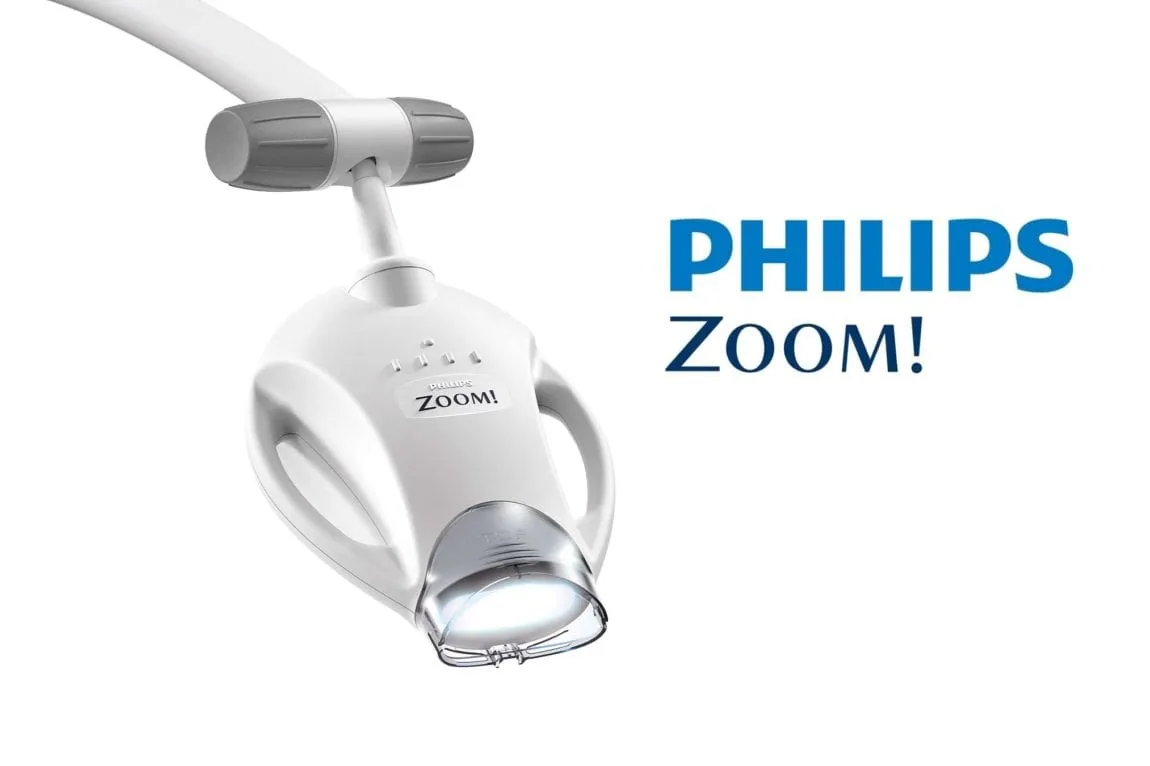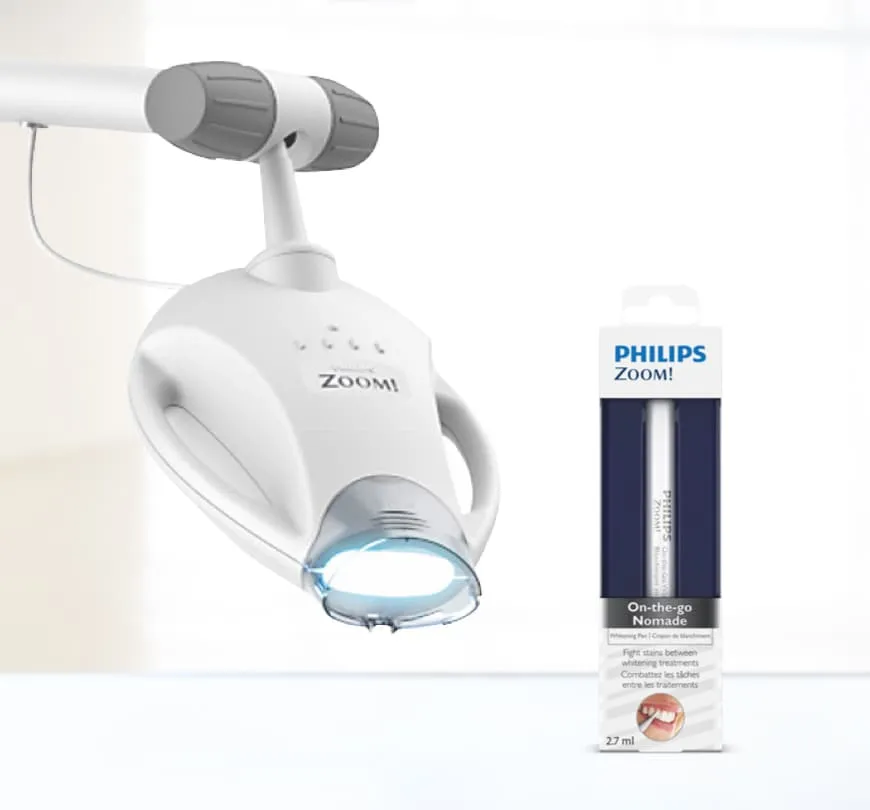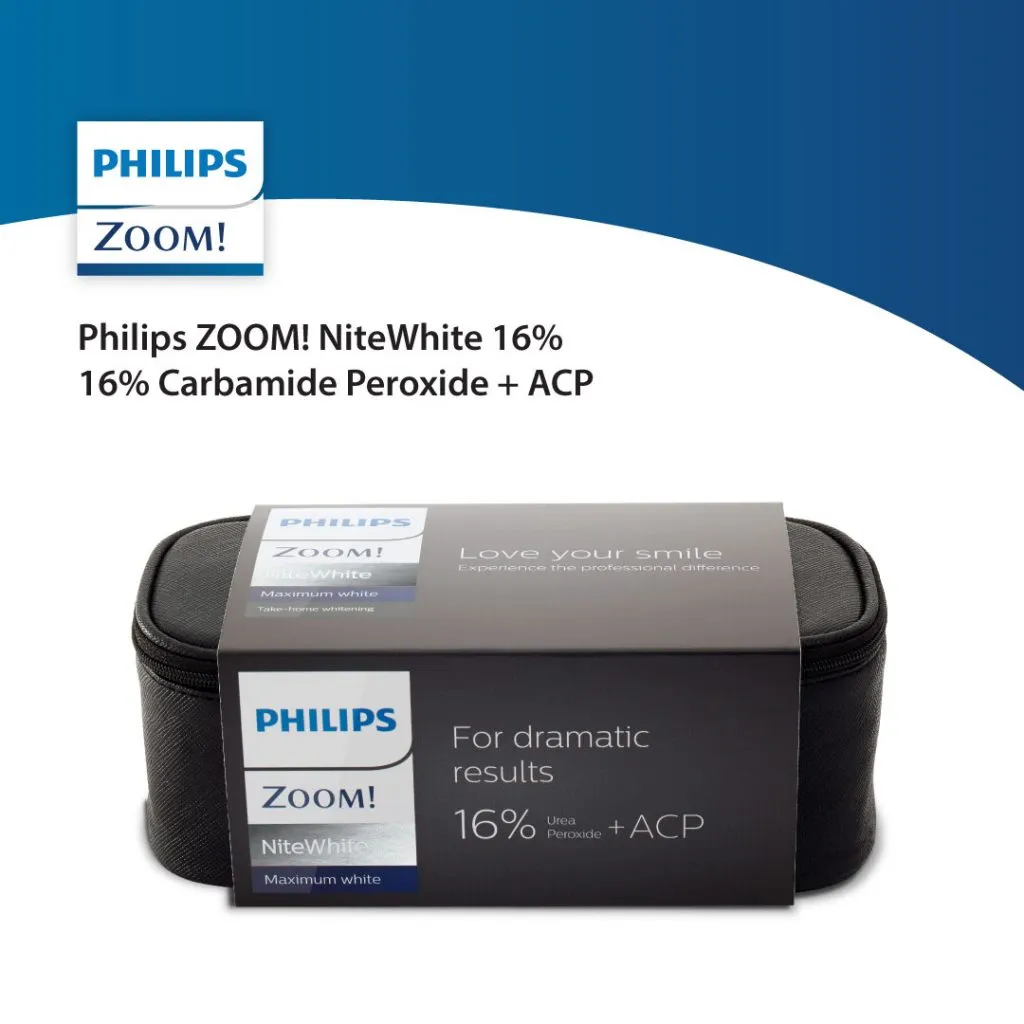What is Philips Zoom Whitening?
Philips Zoom Whitening is a popular professional teeth whitening treatment offered by dentists. It utilizes a bleaching process to lighten the enamel of your teeth, removing stains and discoloration caused by factors like coffee, tea, tobacco, and aging. The procedure typically involves applying a high-concentration hydrogen peroxide gel to the teeth, which is then activated by a special light. This light accelerates the whitening process, delivering noticeable results in a relatively short amount of time. Unlike over-the-counter whitening products, Philips Zoom is administered by a dental professional, ensuring both safety and effectiveness. This makes it a preferred choice for those seeking a brighter, more confident smile, quickly and under controlled conditions. The process often includes pre- and post-treatment instructions to maximize results and minimize potential sensitivity.
Active Ingredients in Philips Zoom Whitening
The primary active ingredient in Philips Zoom Whitening is hydrogen peroxide. This chemical compound acts as a bleaching agent, breaking down the stain molecules within the tooth enamel. The concentration of hydrogen peroxide can vary depending on the specific Zoom treatment used by the dentist. Higher concentrations typically lead to faster and more dramatic whitening results, but also increase the potential for tooth sensitivity. Other ingredients are included to aid in the process, such as stabilizers to maintain the peroxide’s effectiveness and agents to enhance the gel’s adherence to the teeth. Understanding the active ingredients is crucial to understanding how the whitening process works and what to expect in terms of results and potential side effects.
Hydrogen Peroxide

Hydrogen peroxide is the core component of Philips Zoom Whitening. It’s a powerful oxidizing agent that penetrates the enamel and dentin, where stains reside. As it breaks down, it releases oxygen molecules, which then react with the stain molecules, breaking them apart and lightening the overall color of the teeth. The concentration of hydrogen peroxide in professional whitening treatments is significantly higher than in at-home products, providing quicker and more visible results. However, this also necessitates professional supervision to monitor for potential side effects, such as tooth sensitivity and gum irritation. This controlled application ensures that the whitening process is both effective and as safe as possible.
Concentration Levels
The concentration of hydrogen peroxide in Philips Zoom Whitening gels can range, depending on the specific product and the dentist’s preference. Professional treatments often use concentrations between 25% and 40%. This high concentration is what allows for rapid and significant whitening. The higher the concentration, the faster the whitening action, but also the greater the potential for tooth sensitivity. Dentists carefully assess each patient’s needs and sensitivity levels before selecting the appropriate concentration. They also take measures to protect the gums and soft tissues from the bleaching agent, ensuring a safe and comfortable experience. The concentration level directly impacts both the effectiveness and the potential side effects of the treatment.
Potassium Nitrate & Fluoride
Many Philips Zoom Whitening formulations include potassium nitrate and fluoride. These ingredients are added to help mitigate tooth sensitivity, a common side effect of teeth whitening. Potassium nitrate works by blocking the transmission of pain signals from the nerves in the teeth, thus reducing sensitivity. Fluoride strengthens the enamel, making the teeth more resistant to external stimuli and helping to remineralize the tooth surface. This dual action helps to create a more comfortable whitening experience and minimize any discomfort during and after the procedure. The combination of these ingredients is carefully balanced to maximize whitening effectiveness while minimizing the potential for side effects.
The Role of Potassium Nitrate

Potassium nitrate plays a crucial role in reducing tooth sensitivity during the whitening process. It works by penetrating the tooth and desensitizing the nerve endings. It essentially calms the nerves, which reduces the sensation of pain often associated with whitening treatments. This is particularly important with higher concentrations of hydrogen peroxide, which can cause increased sensitivity. By including potassium nitrate in the formula, Philips Zoom Whitening aims to provide a more comfortable experience for patients. The dentist may also recommend using a potassium nitrate toothpaste for a few weeks prior to and after the treatment to further manage sensitivity and maximize patient comfort.
The Role of Fluoride
Fluoride is a key ingredient that contributes to the health and strength of tooth enamel. During teeth whitening, the enamel can become slightly more porous, increasing the risk of sensitivity. Fluoride helps to remineralize the enamel, strengthening it and reducing sensitivity. It also acts as a protective barrier against external stimuli. After whitening, the dentist might apply a fluoride treatment to further protect the teeth and enhance the whitening results. This strengthens the enamel, improving its resistance to staining and maintaining a brighter smile for longer. Fluoride ensures that the whitening process is not only effective but also beneficial for long-term oral health.
Other Ingredients in Philips Zoom Whitening
In addition to the active ingredients, Philips Zoom Whitening gels contain a variety of other components that contribute to their effectiveness and user experience. These ingredients are designed to stabilize the hydrogen peroxide, improve the gel’s texture and adhesion to the teeth, and enhance the overall comfort of the treatment. These components work together to create a whitening product that is both effective and safe, resulting in a brighter smile for the patient. The specific composition can vary depending on the particular Philips Zoom product being used by the dentist. These additional ingredients are carefully selected to optimize the whitening process and minimize potential side effects.
Water

Water is used as a solvent to help create the gel consistency and to allow the other ingredients to mix properly. It ensures that the active ingredients, such as hydrogen peroxide, can effectively penetrate the enamel and reach the stains. Water also contributes to the overall stability of the formulation. It acts as a carrier for the active bleaching agent and helps it to be evenly distributed on the teeth’s surface. The use of purified water helps to ensure that the whitening process is safe and effective. Water plays a critical role in the overall formulation and performance of the whitening gel, ensuring a smooth and even application.
Thickening Agents
Thickening agents are added to Philips Zoom Whitening gels to give them the right consistency and ensure that they adhere to the teeth. These agents prevent the gel from running or dripping during the treatment, allowing for even and consistent coverage. This ensures that the hydrogen peroxide remains in contact with the teeth for the duration of the whitening process. These agents help to maintain the gel’s stability and enhance its performance. Different types of thickening agents may be used, but their primary function is to ensure effective contact with the teeth, providing the best possible whitening results. This controlled application is essential for an effective and safe whitening treatment.
Flavoring Agents
Flavoring agents are included in Philips Zoom Whitening gels to improve the taste and make the treatment more pleasant for the patient. These agents mask the sometimes unpleasant taste of hydrogen peroxide and other ingredients. Flavoring agents can range from mint to other fruity flavors, enhancing the overall patient experience. These flavoring agents are carefully selected to not interfere with the whitening process and to be compatible with the other ingredients in the formula. While the primary function of the gel is whitening, flavor is another factor considered to improve the patient’s comfort and satisfaction during the treatment.
Important Considerations

Before undergoing Philips Zoom Whitening, it’s essential to discuss your dental history and any concerns you have with your dentist. This professional consultation ensures the treatment is suitable for you and helps manage expectations regarding results and potential side effects. Your dentist will assess your oral health, including the condition of your teeth and gums, to determine if you are a good candidate. They will also explain the entire procedure, including potential risks such as sensitivity. This open communication between patient and dentist ensures a comfortable and successful whitening experience. Your dentist will also be able to determine the best course of action based on your individual needs and dental health.
Allergies & Sensitivities
Inform your dentist about any allergies or sensitivities you may have, especially to peroxide or related chemicals. While allergic reactions to Philips Zoom Whitening are rare, it’s always important to disclose any potential sensitivities. This helps the dentist to choose appropriate precautions and modify the treatment if needed. In some cases, alternative whitening options might be recommended. Detailed discussions about your dental and medical history are crucial to ensure the safety and effectiveness of the procedure. By knowing this information beforehand, your dentist can tailor the treatment to minimize any risks and ensure a comfortable experience. Always be upfront about any existing conditions or sensitivities you might have.
Professional Application
Philips Zoom Whitening must be performed by a licensed dental professional. Dentists have the training and expertise to apply the whitening gel safely and effectively. They also use protective measures like cheek retractors and gum shields to prevent the gel from contacting soft tissues and causing irritation. This ensures that the whitening process is controlled and that any potential side effects are managed promptly. Professional application also allows for monitoring of results and adjustments to the treatment as needed. Using a trained professional is the safest and most effective way to achieve the desired whitening results.
Effectiveness and Results

Philips Zoom Whitening is known for its ability to deliver significant and noticeable results in a short amount of time. Patients can typically expect their teeth to become several shades lighter after a single session. The exact degree of whitening varies depending on the initial shade of the teeth and the severity of the staining. The results are often dramatic, leading to a brighter and more confident smile. Maintenance is often recommended to sustain these results. This might include periodic touch-up treatments or at-home whitening products. With proper care and maintenance, patients can enjoy their whiter smiles for an extended period.
Philips Zoom Whitening vs. Alternatives
Compared to at-home whitening options, Philips Zoom Whitening offers several advantages. It provides faster and more dramatic results due to the higher concentration of hydrogen peroxide used in the professional setting. Professional application also ensures safety and minimizes the risk of gum irritation and tooth sensitivity. Over-the-counter products may take longer to produce noticeable results and may not be as effective for severe stains. While at-home options can be convenient, Philips Zoom provides a more controlled and effective solution for those seeking significant improvements in tooth color. Discussing the pros and cons with your dentist will help you decide which option best suits your needs and goals.
